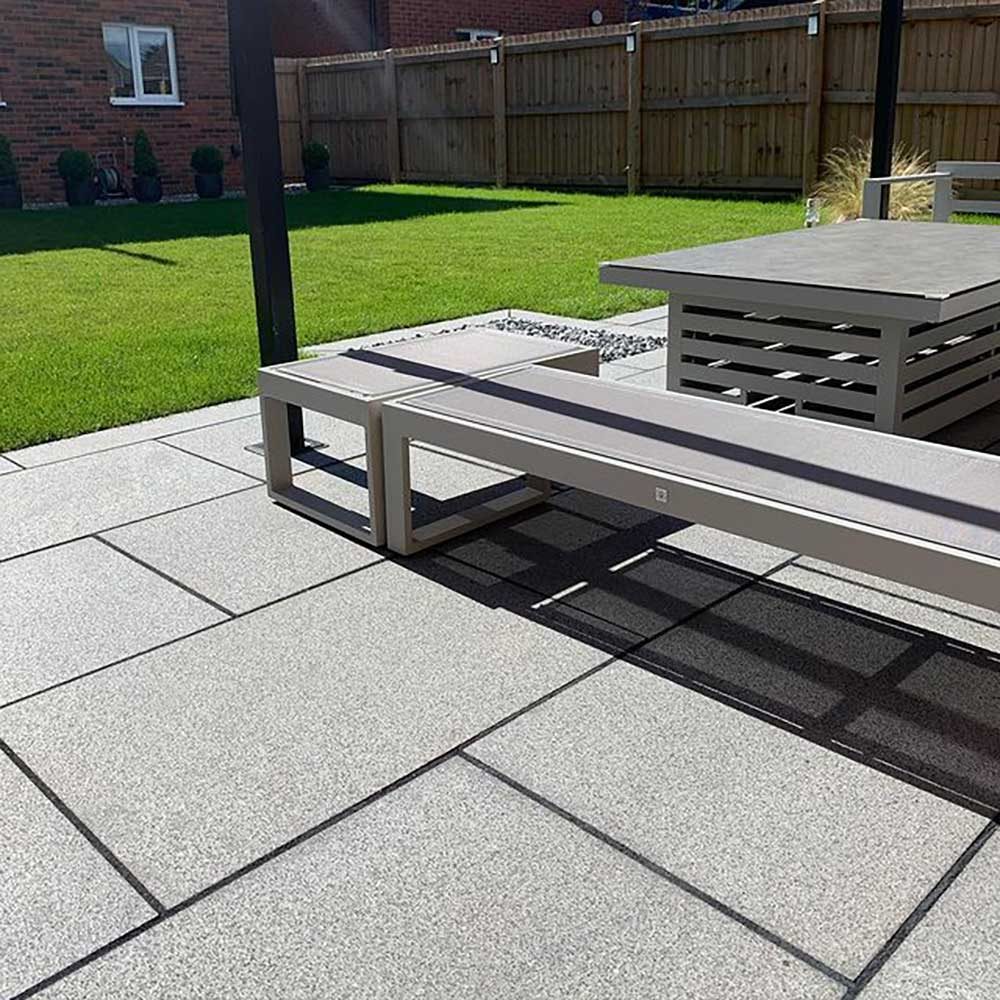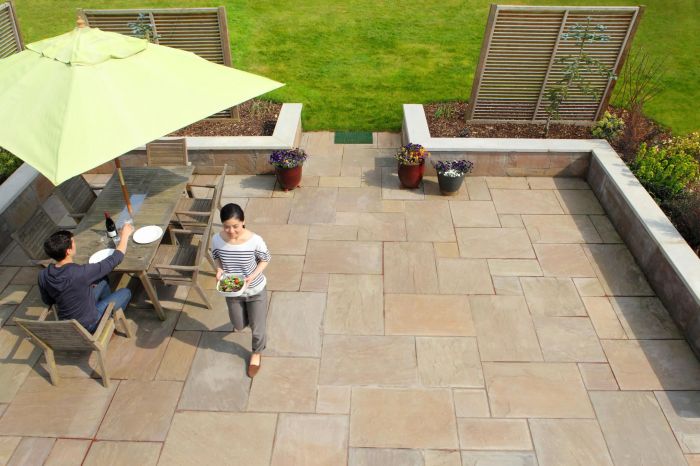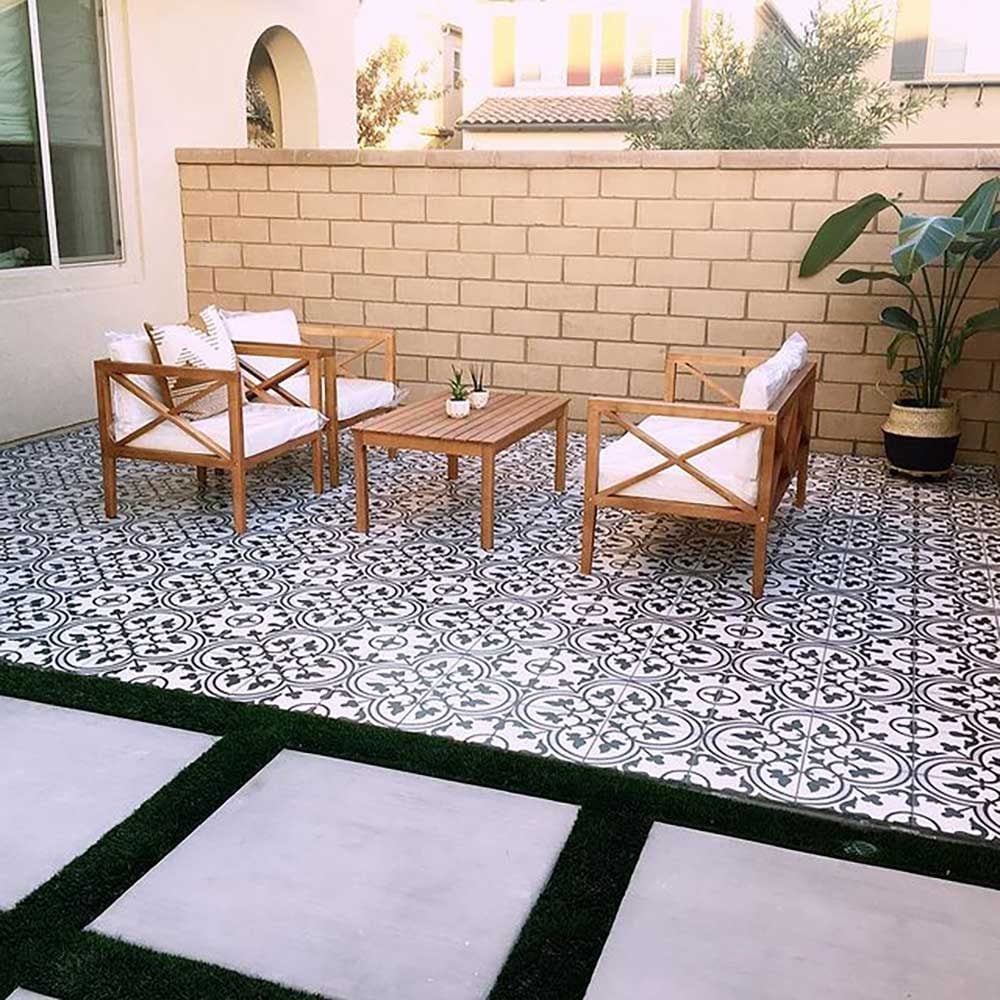Transform your outdoor space into an oasis of style and functionality with the perfect outside tiles for your patio. Whether you’re envisioning a classic, contemporary, or rustic aesthetic, this guide will empower you with the knowledge and inspiration to create a patio that reflects your unique taste and lifestyle.
From exploring the diverse materials available to understanding the intricacies of design and installation, this comprehensive guide will guide you through every step of the process. Embrace the beauty and durability of outside tiles, and elevate your patio into an outdoor sanctuary that seamlessly blends aesthetics and functionality.
Materials
Choosing the right material for your patio tiles is crucial to ensure durability, safety, and aesthetics. Here are the key materials to consider, along with their pros and cons:
Ceramic Tiles
- Pros: Durable, versatile, easy to clean, available in a wide range of colors and patterns.
- Cons: Can be slippery when wet, may require sealing to prevent staining.
Porcelain Tiles
- Pros: Highly durable, impervious to water, low maintenance, available in various styles.
- Cons: More expensive than ceramic tiles, can be difficult to cut.
Natural Stone Tiles
- Pros: Unique and elegant appearance, durable, resistant to wear and tear.
- Cons: Can be expensive, require regular sealing to prevent staining, may be uneven or slippery.
Concrete Tiles
- Pros: Durable, affordable, customizable, can be stamped or stained for various designs.
- Cons: Can be heavy, may crack or discolor over time, require regular cleaning.
Factors to Consider
When selecting a material, consider the following factors:
- Durability: Choose tiles that can withstand foot traffic, weather conditions, and potential impacts.
- Slip Resistance: Opt for tiles with a high coefficient of friction to prevent accidents, especially in wet areas.
- Maintenance Requirements: Consider tiles that are easy to clean and maintain, requiring minimal sealing or repairs.
- Style: Select tiles that complement your home’s exterior and personal preferences.
Design Considerations
When selecting tiles for your patio, consider the overall design scheme, size, and shape of the area, and the desired visual effect. For small patios, larger tiles can make the space appear more spacious, while smaller tiles can add visual interest.
For larger patios, a mix of tile sizes can create a dynamic look. Experiment with different shapes, such as squares, rectangles, hexagons, or octagons, to add visual interest and create unique patterns.
Choosing the Right Color
The color of your tiles will significantly impact the overall look and feel of your patio. Light-colored tiles reflect more light, making the space feel brighter and more open. Darker tiles absorb more light, creating a more intimate and cozy atmosphere.
Consider the amount of sunlight your patio receives and the desired ambiance when selecting the color of your tiles.
Creating Visual Interest
In addition to tile size and color, you can create visual interest on your patio using patterns, borders, and inlays. Patterns can be created by alternating different tile colors or shapes, while borders can be used to frame the patio or highlight certain areas.
Inlays are smaller tiles that are used to create decorative accents or designs within the larger tile field.
Classic and Contemporary Designs
There are many classic and contemporary patio tile designs to choose from. Classic designs often feature traditional materials like terracotta or stone in neutral colors. Contemporary designs may incorporate more modern materials like porcelain or concrete and feature bolder colors and patterns.
Consider the style of your home and the desired ambiance when selecting a patio tile design.
Installation Techniques
Installing outside tiles for patios involves several steps, including site preparation, tile layout, and grouting. Proper installation techniques are crucial for ensuring the longevity and aesthetics of your patio.
There are two common installation methods for outside tiles: thin-set mortar and dry-set methods.
Site Preparation
Before installing tiles, the site must be properly prepared. This includes:
- Removing any existing surface, such as grass or concrete.
- Compacting the soil to create a stable base.
- Installing a drainage system to prevent water from pooling.
- Creating a level surface using a screed or leveling compound.
Tile Layout
Once the site is prepared, the tiles can be laid out. This involves:
- Determining the center point of the patio and starting the layout from there.
- Using spacers to ensure even spacing between tiles.
- Checking the layout for level and making adjustments as needed.
Thin-Set Mortar Method
The thin-set mortar method involves applying a thin layer of mortar to the back of each tile and pressing it into place on the prepared surface. The mortar acts as an adhesive, bonding the tiles to the surface.
This method is suitable for most types of tiles and surfaces, but it requires more skill and experience to install properly.
Dry-Set Method
The dry-set method involves applying a layer of adhesive to the prepared surface and then setting the tiles into the adhesive. The adhesive is typically a dry powder that is mixed with water before use.
This method is easier to install than the thin-set mortar method, but it is not as strong and may not be suitable for all types of tiles or surfaces.
Grouting
Once the tiles are installed, the joints between them must be filled with grout. Grout is a cementitious material that helps to seal the joints and prevent water from penetrating.
Grout is typically applied using a grout float or a sponge. It should be allowed to set for several hours before walking on it.
Safety Tips
- Wear appropriate safety gear, including gloves, safety glasses, and a dust mask.
- Use a level to ensure that the tiles are installed evenly.
- Allow the adhesive or mortar to dry completely before walking on the tiles.
- Seal the tiles with a penetrating sealer to protect them from the elements.
Maintenance and Care
Regular cleaning and maintenance are crucial for preserving the appearance and longevity of outside tiles for patios. To maintain their optimal condition, it’s essential to follow a proper care routine.
Cleaning Tiles
Clean the tiles regularly to remove dirt, debris, and stains. Use a mild detergent mixed with warm water and a soft-bristled brush or sponge. Avoid using harsh chemicals or abrasive cleaners, as they can damage the tiles. Rinse the tiles thoroughly with clean water after cleaning.
Final Conclusion
As you embark on the journey of selecting and installing outside tiles for your patio, remember that the possibilities are endless. Let your creativity soar, experiment with different materials, designs, and patterns, and embrace the opportunity to create a truly personalized outdoor haven.
With careful consideration and attention to detail, you can transform your patio into an extension of your living space, where memories are made and cherished for years to come.



